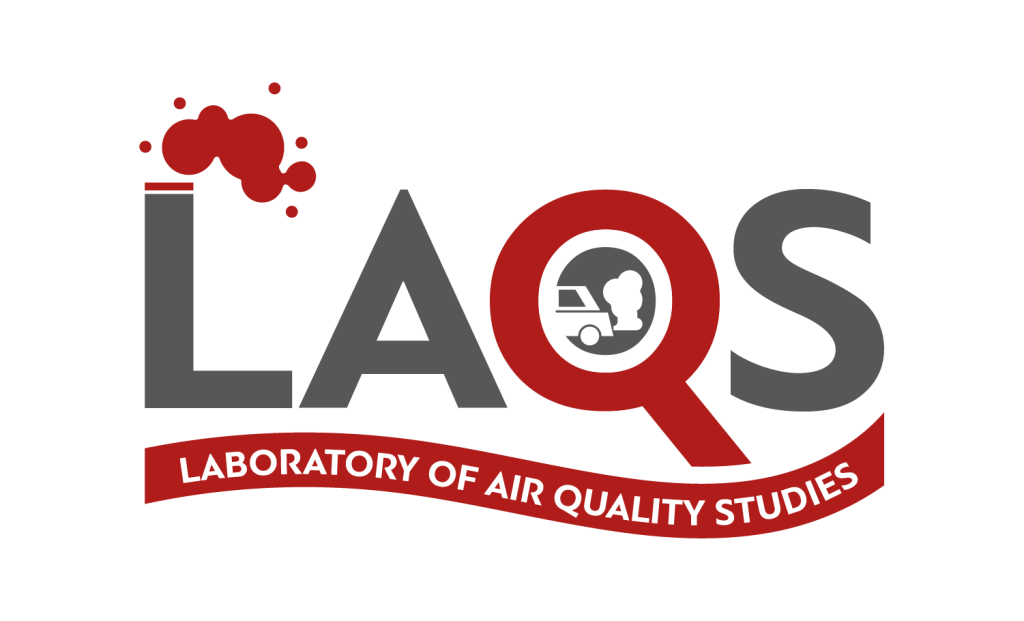Current Projects
European projects
The EASVOLEE project will improve our understanding of organic emissions from vehicle exhaust including low-volatility (LVOCs), semi-volatile (SVOCs), intermediate volatility (IVOCs) and volatile organic compounds (VOCs). It will elucidate the corresponding secondary aerosol formation (both organic and inorganic) and characterize the health effects of these primary and secondary particles.
The contribution of engine exhaust emissions to PM2.5 and size-resolved particle number concentrations in Europe will be quantified during all seasons. The above scientific evidence will be used to investigate the effectiveness of policies to reduce secondary organic and inorganic PM levels in urban areas – with a focus on components impacting health. Finally, EASVOLEE will develop new approaches to improve the quantification of transport impacts on air quality and health effects supporting future emissions and climate legislation.
SynAir-G aims to reveal and quantify synergistic interactions between different pollutants affecting health, from mechanisms to real-life, focusing on the school setting. We will develop a comprehensive and responsive multipollutant monitoring system, advance environmentally friendly interventions, and disseminate the generated knowledge to relevant stakeholders in accessible and actionable formats. To achieve these objectives, SynAir-G will construct and deploy novel and improved sensors of chemical and biological (allergens, microbes) pollutants. These will be tested in a real-world setting, in participating schools of 5 countries around Europe and eventually combined into a multisensing platform. In the same setting, pollutants will be linked to their sources and two eco-friendly air-purifying devices will be assessed. Health outcome data will be obtained from children using a gamified app and prospective monitoring, respecting privacy. Highly susceptible children, such as those with allergy or asthma, will act as sentinels to increase sensitivity of the system,that will be able to provide stratified (susceptibility-specific) alerts. Explainable AI will support the near-real time analysis and response. In parallel, cell and mouse models will evaluate the mechanisms and complex dose-responses of the synergistic parameters. SynAir-G will thus provide FAIR data on air pollutants and their sources, a comprehensive and personalized user-friendly solution to monitoring indoor air quality, and proposals for possible interventions and an improved regulatory framework, robustly supporting the Zero Pollution Action Plan. SynAir-G is part of the Indoor air and health cluster.
The main objective of Research Infrastructures Services Reinforcing Air Quality Monitoring Capacities in European Urban & Industrial AreaS (RI-URBANS) is to develop Service Tools (STs) that will provide novel insights into spatio-temporal variability of air quality parameters, population exposure and air quality health interactions. This will enable to reduce air pollution effects in European cities and industrial hotspots. The project takes on board advanced research-driven Air Quality (AQ) observations at selected European pilot cities. By combining Air Quality Monitoring Networks (AQMNs) and RIs advanced science knowledge and innovative technologies, RI-URBANS deploys tools and information systems in the hands of citizens and communities to support decision-making by AQ managers and regulators. These will enhance the AQMNs capacity to evaluate, predict and mitigate the impact of AQ on human health.
ATMO-ACCESS is the organized response of distributed atmospheric research facilities for developing a pilot for a new model of Integrating Activities. The project will deliver a series of recommendations for establishing a comprehensive and sustainable framework for access to distributed atmospheric Research Infrastructures (RI), ensuring integrated access to and optimised use of the services they provide. It will develop and test innovative modalities of access to facilities and complementary to more advanced services, including digital services, developed as part of cross-RI efforts. Project’s research facilities includes ground-based observation stations, simulation chambers, but also mobile facilities and central laboratories that are fundamental elements in distributed RIs.
Chronic obstructive pulmonary disease and cystic fibrosis are two highly debilitating chronic respiratory diseases sharing common characteristics, yet presenting opposite roots: the former appears to be intricately related to the exposome while the latter not. The EU-funded REMEDIA project is developing approaches combining the collection of exposome and clinical data, advanced machine learning, the use of atmospheric simulation chambers, and the development of individual sensor devices, in order to address the impact of exposome on the course of these two lung diseases.
Greek Projects
CHEVOPIN
The Chemical Evolution of Gas-and Particulate-Phase Organic Pollutants in the Atmosphere (CHEVOPIN) project will allow the assessment of the effectiveness of policies in-place and the better design of future policies to improve air quality but also to reduce the damages due to climate change. Policy making will be influenced by the CHEVOPIN outcomes; directly by public outreach, and providing relevant results to policy makers, and indirectly by delivering relevant scientific studies to international assessments and organizations that in turn are important in international and European policy making
NANOSOMs
The objectives of NANOSOMs are:
(i) The development and evaluation of accurate and cost-effective techniques for the measurement of PM0.1 concentration, composition, physical, and toxicological properties.
(ii) The quantification of the temporal and spatial variability of PM0.1 and its sources in selected urban, suburban and rural areas
(iii) The development and evaluation of the next generation of an urban/regional chemical transport model for the simulation of PM0.1.
(iv) The quantification of the importance of the various sources and formation pathways of PM0.1 in Europe, and its sensitivity to emissions.
(v) The linking of exposure to PM0.1 to the PM health effects.
(vi) The identification of strategies that lead to reductions of PM0.1 in Europe.
The proposed work involves a combination of laboratory measurements for the development of new experimental techniques, field measurements, chemical transport model development, and modelling in urban and regional scales. Therefore, it will span the system scales starting from the nanoscale to thousands of kilometers.
PANSEN
The project PANSEN has been funded through donations from the Public Benefit Foundation under the name ‘Bodosaki Foundation’ and the Public Benefit Foundation under the name ‘Public Benefit Foundation of Social and Cultural Work.’ Its purpose is to establish a Nationwide Network for Measuring Suspended Particulate Matter with Low-Cost Sensors. Continuous measurements will be available in real-time on an online platform, accessible to both local and national authorities for identifying issues and improving air quality.
The main goal of REINFORCE is to improve the state-of-play parameterizations of atmospheric aerosols in Earth System Models via the implementation of high-precision chemistry/emission modeling tools for global and regional scale projections of climate change. In more detail, REINFORCE will involve beyond-state-of-the-art aerosol research and investigate the climate implications for global and regional scale projections. REINFORCE will advance the current understanding of aerosol radiative forcing through the synergistic use of atmospheric composition and climate simulations, along with a carefully selected suite of observations. REINFORCE will significantly contribute to the major advancements of the European Earth system modeling community and will help to tackle some of the grand challenges that climate modeling currently faces.
Το έργο «Διασυνδεδεμένες Έξυπνες Πόλεις για την Ελλάδα 2.0» (Κωδικός TAEDR-0536642) υλοποιείται στο πλαίσιο της Δράσης «Εμβληματικές δράσεις σε διαθεματικές επιστημονικές περιοχές με ειδικό ενδιαφέρον για την σύνδεση με τον παραγωγικό ιστό», Ελλάδα 2.0 – Εθνικό Σχέδιο Ανάκαμψης και Ανθεκτικότητας.
Οι «Διασυνδεδεμένες Έξυπνες Πόλεις για την Ελλάδα 2.0» αποτελούν ένα Οραματικό Έργο δημιουργίας μίας πλατφόρμας του ΔτΠ, η οποία ξεχωρίζει από τις υπόλοιπες, προσφέροντας εκτενή ανάλυση της τρέχουσας υποδομής των πόλεων στην Ελλάδα. Μέσω της εμβληματικής δράσης “Εμβληματικές δράσεις σε διαθεματικές επιστημονικές περιοχές με ειδικό ενδιαφέρον για τη σύνδεση με τον παραγωγικό ιστό” αποσκοπεί στην ενοποίησή των εκάστοτε κάθετων υλοποιήσεων και των ήδη υπαρχόντων μοντέλων τους.
Τα τεχνολογικά αποτελέσματα του Έργου συγκαταλέγονται:
- Στη δημιουργία νέων εφαρμογών ΔτΠ με στόχο την Έξυπνη Πόλη.
- Στο συνδυασμό και συγχώνευση υπηρεσιών, δομών και δεδομένων, χωρίς να απαιτείται η γνώση των τεχνικών και λειτουργικών χαρακτηριστικών της εκάστοτε κάθετης υλοποίησης.
- Στη δυνατότητα συλλογής αξιοποίησης και επεξεργασίας, μεγάλων δεδομένων από πολλαπλές πηγές και δυνατότητα αξιοποίησης σε υφιστάμενα μοντέλα ανάλυσης σε μεγαλύτερο όγκο δεδομένων και ανάπτυξη νέων υπηρεσιών και εφαρμογών που θα εφορμώνται από τα νέα αποτελέσματα.
- Στη δωρεάν διαλειτουργικότητα για επιχειρήσεις ανά την Ελλάδα για να παρέχουν καινοτόμες λύσεις του ΔτΠ σε όλη τη χώρα.
- Στην επιτάχυνση εξελίξεων στο χώρο και αλλαγή στον τρόπο χτισίματος τέτοιων εφαρμογών.
- Στη διάθεση περισσότερων αποτελεσμάτων στην επιστημονική κοινότητα για περαιτέρω ανάπτυξη στη βιομηχανία για τη δημιουργία νέων προϊόντων και υπηρεσιών.
Το Εργαστήριο για την Μελέτη της Ατμοσφαιρικής Ρύπανσης του Ινστιτούτου Επιστημών Χημικής Μηχανικής (Ίδρυμα Τεχνολογίας και Έρευνας) συμμετέχει στην ανάπτυξη και ενσωμάτωση κάθετης πιλοτικής υλοποίησης σχετικά με την παρακολούθηση της ποιότητας αέρα σε αστικές περιοχές (για την περιοχή της Πάτρας).






